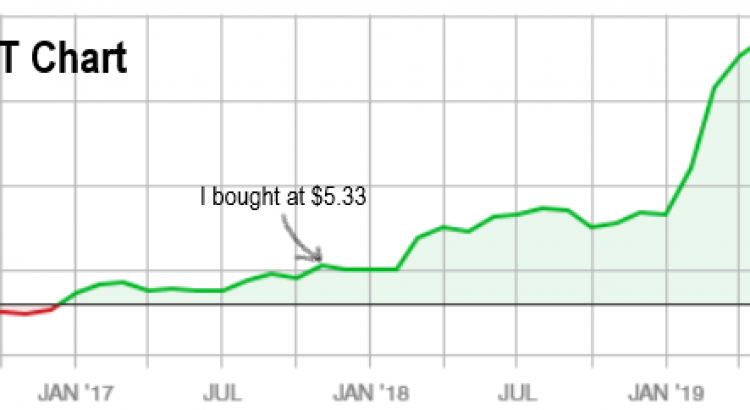I owned Joint Corp (Nasdaq: JYNT) at an average cost basis of $5.33 a share in November 2017. Today it’s trading around $19 a share. To put that in perspective, $10,000 invested would have grown to nearly $36,000. Sadly, I did not participate in any of the upside despite having researched the stock and buying it.
My original research on JYNT led me to conclude that the chiropractic clinic company would eventually turn a profit. I liked their simple, attractively-priced, bare-bones service model. I was impressed with their growth from 6 to 370 clinics in 6 years from March 2010 to December 2016. I also thought that their failures in Chicago and Upstate New York were short-term flukes that the company would eventually recover from and surpass. Looking back at my notes, I estimated that they could get to $4 million operational cash flow in fiscal 2018. Peeking at the actual 2018 cash flow statement, it appears they ended up doing ~$5.5 million. Since I don’t follow the stock anymore, I haven’t looked at the results in-depth to see how exactly how the company got to ~$5.5 million, but the point is they turned the profit I believed they could, and the market ended up responding in kind.
How I Missed Out on JYNT
Sadly, I did not participate in any of the ~3X upside. In 2017, I was still straddling the fence between trader versus investor. I was A-B’ing results with half of my portfolio dedicated to short-term trading and the other half dedicated to long-term investing. At the time, I was not yet fully sold that long term investing could beat trading (despite increasing historical evidence I was coming across and synthesizing, and my own experience leaving too much money on the table with stocks I thought I had traded impeccably.)
In the process of wrestling with these two approaches, I had foolishly placed a stop on JYNT to “limit downside”, which makes sense for traders playing price momentum but not investors who are bidding knowledgably on intrinsic value. When the stock drifted lower and shaved a percent off my account, all my research and conviction went out the window and I went into trader/survival mode: I cut the position and used the freed-up cash for another trading idea.
This was clearly a mistake. But since stop losses had helped me become a profitable trader, I still resonated with the idea that volatility = risk. Despite being aware of the idea that investors should “only buy stocks that you’d love to buy more of even if the price went lower,” I hadn’t fully internalized the concept yet. In my experience, having stop losses was crucial to success as a trader. But when I was trading, I wasn’t bidding to own a company at its discounted terminal value – I was simply trend following like the Turtle Traders in the 1980’s.
Either way, taking the loss made me think of the stock as a loser and a source of pain, even though my research had told me it was a potential winner. I continued to track it, but by the time JYNT was $8 I had already anchored to my $5 bid and refused to get back in. (I’m sure you can identify a couple of key cognitive biases here that did me a disservice.)
Takeaways
This is not the first multi-bagger I missed that I actually researched and bought, and I’m sure it won’t be the last. But my experience with JYNT isn’t a tragic one. It’s actually a validating one.
This experience revealed to me that all the things I’ve learned from studying and profiling historical multi-bagger stocks are not just theories – they translate into real life results in the present. This experience has shown me first-hand – and not just in a textbook – that even if the price of a stock goes down, it doesn’t mean it will stay down forever – if it has the intrinsic value to support it. It has shown me that the market does indeed pile into a stock (perhaps more than is necessary) when they swing from unprofitable to profitable, even when the economy at large is in the late stages of the business cycle. Also, my experience with JYNT helped solidify the notion in my mind that stop losses are only necessary for speculators who are trading market momentum (which is unpredictable and thus needs a safety net) and not the underlying business (which is predictable to an extent for some businesses and industries.)
While JYNT isn’t the only stock that has taught me these lessons, it is another piece of evidence to store in my mental filing cabinet that reminds me to trust my independent research and to be willing to see my ideas through, regardless of what the market does in the short-term.
Disclosure: I have no position in any of the stocks mentioned in this article and have no plans to initiate a position within the next 72 hours. This article expresses my opinions only, and is not to be misconstrued as investment advice or a recommendation to buy or sell stock. For more information, refer to the Terms of Use.

